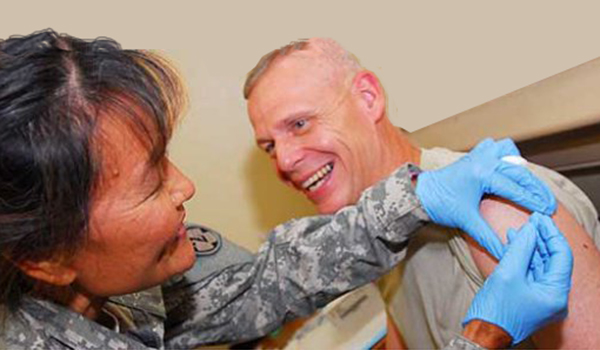
Ask the Flight Surgeon / By CPT Erik S. Johnson, D.O.: Q: Doc, I always catch a couple of colds every year. When is a cold considered grounding and what treatments can I use?

www.army.mil photo
FS: Upper respiratory infections (URIs) such as the common cold are, well, common. While not everyone may experience them every year, most of us experience them at some point in our lives. It would not be surprising for an otherwise healthy pilot to experience two to three bouts with the common cold in a single fall-winter season. Due to their frequency, let’s take a few minutes to understand the key aspects of the common cold and when it might be time to consult with your local flight surgeon.
A URI is generally defined as any infection, whether by virus or bacteria, of the upper respiratory system. This system includes the nasal passages, sinuses, throat (or pharynx), and voice box (or larynx). Besides the common cold, many other types of infections can wreak havoc on the upper respiratory system including sinusitis, pharyngitis, tonsillitis, and laryngitis. However, when we talk about URIs, we are almost always referring to the common cold. A vast majority of these infections are caused by viruses and only rarely by bacteria. Exposures to those who are ill or touching a surface such as a door knob contaminated with virus particles and then wiping the face are the most common modes of transmission. Fortunately, viral illnesses are self-limited. In other words, viral infections will usually resolve without treatment over a period of seven to ten days.
The most common symptoms of a URI are a runny nose and a sense of nasal fullness, or “stuffiness.” Sore throat, coughing, headache, and sinus pain or pressure may also be present, but tend to be only mild in severity. Fever, general malaise (fatigue and achiness) or more severe cold symptoms suggest infections beyond the common cold and require further evaluation. If symptoms fail to resolve or improve over seven to ten days, this may also suggest a more severe infection and suggest it’s time for further evaluation.
Complications
A common cold may become complicated by a sinus infection. This occurs when mucous blocks the sinuses from properly draining and bacteria begin to replicate in this closed space. This bacterial infection of the sinus and resulting inflammation (or sinusitis) often causes fever, headaches, facial pressure and pain. This is important for aircrew because these symptoms can increase with exposure to high altitudes. Trapped air within the sinus can expand and increase pressure, potentially leading to barotrauma. Additionally, the mucous may plug the Eustachian tube, which drains fluid and equalizes pressure from behind your eardrum. This can lead to difficulty clearing the ears through the Valsalva maneuver and potentially lead to a ruptured eardrum. Obviously, the resulting pain and pressure can cause a significant distraction in the cockpit. If that isn’t concerning enough, differences in pressure between the ears may significantly increase or contribute to spatial disorientation.
Treatment
There are many medications available both through prescription or over the counter that help manage the symptoms of URIs. Which medications are safe for flight will be the topic for the next Ask the Flight Surgeon article, and is also a discussion that should be had with your local flight surgeon. If the local flight surgeon is not immediately available, aircrew members can always refer to the Aeromedical Policy Letters for a list of acceptable class I medications.
In general, if you have noticed any change in your health, such as catching a cold, you should see your flight surgeon or aeromedical physician assistant before flying to make a safe aeromedical decision. That being said, self-grounding for mild cold symptoms and following your local self-grounding SOP will minimize unnecessary use of medical resources. If symptoms progress or fail to resolve over a few days, it is then prudent to see your local flight surgeon. This may seem inconvenient, but there is good reason for caution. In aviation, mental clarity without distractions is paramount to safety. URIs may interrupt your thinking process, slow your reaction time, and reduce your attentiveness. As previously discussed, if the sinuses or the Eustachian tube become blocked, significant distracting pain can develop with even small changes in altitude.
In summary, even the common cold has the potential to cause very serious safety issues in-flight. Though some colds may necessitate grounding, it often will only require a few days for symptoms to resolve before returning to flight. Honest and timely consultation with your flight surgeon is imperative and in the interest of both your safety and health.
Be safe, stay healthy, keep flying.
Questions?
If you have a question you would like addressed, email it to This email address is being protected from spambots. You need JavaScript enabled to view it.; we’ll try to address it in the future. See your unit flight surgeon for your personal health issues. The views and opinions offered are those of the author and researchers and should not be construed as an official Department of the Army position unless otherwise stated
CPT (Dr.) Erik S. Johnson is a flight surgeon at the U.S. Army School of Aviation Medicine, Fort Rucker, AL.








